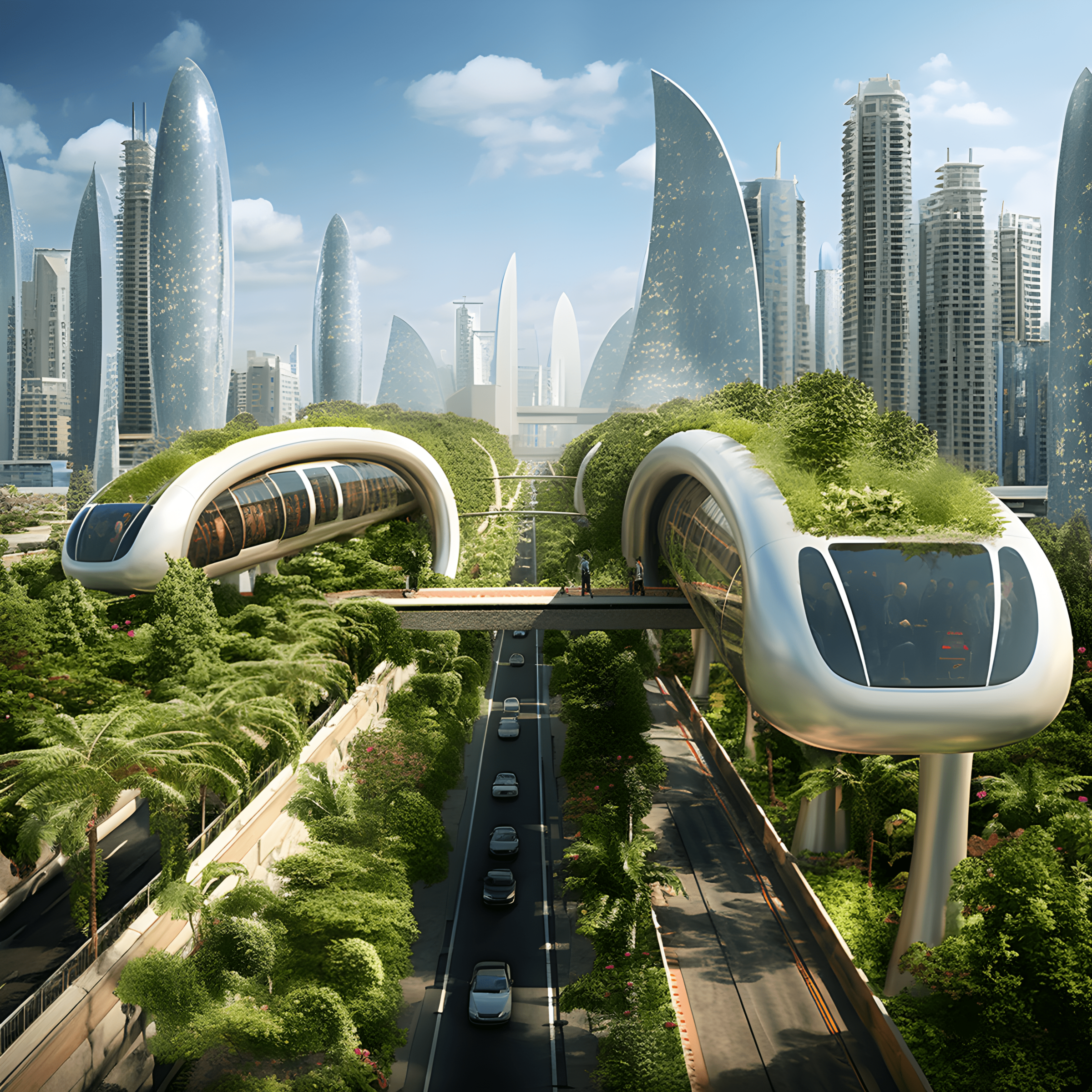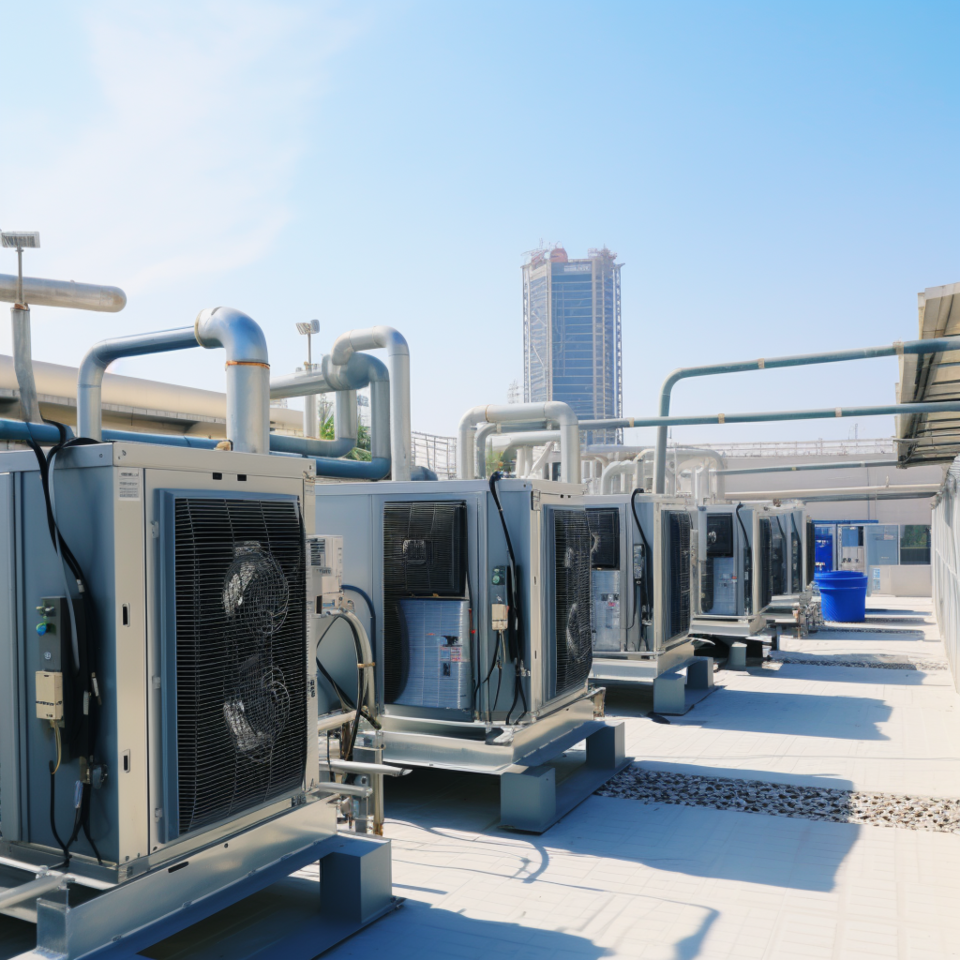
The world is getting hotter in terms of global warming — for the past 150 years Earth’s average yearly surface temperature has risen by one degree Celsius. And it’s even more in the MENA region — Dubai today is 1,5 degrees Celsius warmer than it used to be 60 years ago (perhaps too many hot parties). While the UAE is pursuing its long-term goal — to become climate neutral by 2050 — the future is closer than you think. Here are the most impressive technologies and projects — from the artificial rain to the city inside a city.
1. Cloud seeding
Miracles happen, but if you see raining in Dubai, there’s no magic — just regular cloud seeding. Some believe this technology was created by an evil mind to prevent you from getting your Careem delivery (traffic in the UAE during rain is unbearable). The truth is that naturally the UAE has less than 100 mm of rainfall per year, water resources are scarce, while population is growing rapidly with the fast development of the region.
The process of cloud seeding involves using aircraft to release chemicals such as salt or silver iodide into the clouds, which enhances the natural rain particles and encourages the clouds to release their moisture as rain. Recent probations are testing another system — with drones targeting specifically selected clouds and “zapping” them with a laser beam.
The UAE has been conducting cloud seeding operations for many years, and it has been reported that the practice has increased rainfall by up to 30%. Is it a nice thing to do? This issue is yet to be discussed — some experts argue that the long-term effects of cloud seeding on the environment are not yet fully understood, and that it could have unintended consequences such as altering the natural precipitation patterns. But for now the technology is in use, which means that rain can mess up with your plans for sunbathing during the weekend.


2. District cooling plants
Since the first appearance in 1998 (which is 25 years ago, if you want to feel old), district cooling plants have revolutionized the way buildings are cooled in the UAE. Instead of individual buildings having their own cooling systems, district plants use a centralized system that distributes chilled water through a network of underground pipes to cool multiple buildings in the area. Basilisk from Harry Potter would have been excited about getting to chill in the pipes during their Dubai holiday.
The system of district cooling plants is energy efficient as the centralized system can be optimized for maximum efficiency. In 2023 this technology managed to keep 40 000 people cool in the Sheikh Zayed Grand Mosque in Abu Dhabi during the 27th night of Ramadan. The temperature inside the mosque should be constant, no matter how many people are inside, and the system made this possible: as the sensors monitored a temperature rise, the pumps automatically started to pump more chilled water.
Districts cooling plants are more reliable in terms of maintenance, than individual air conditioning. They are sustainable: yes, they consume water, but the amount of it is relatively small due to close-loop operation cycle. Finally, they are cost effective: although building the network of pipes that circulate chilled water brings additional costs, typically a plant consumes 40 to 50 percent less energy for every refrigeration ton hour than conventional in-building technologies, giving a serious advantage to the plants in a long-term perspective.
3. The Loop Project
Can you imagine strolling across Dubai in the middle of the summer? Well, probably only in your nightmares. But this is going to change next year, when the Loop Project is set to launch. The green corridor will span across 93 kilometers, connecting people all over the city via sustainable urban highway. The project aims to facilitate a more active lifestyle for residents, creating a paradigm shift from car-centric to people-centric infrastructure. The plan is ambitious — creators believe that by 2040 80% of Dubai residents will commute on foot or by bicycle on a daily basis. Sounds like a dream, but if it happens, there will be less carbon emissions in the city. Profit!
The best news is that the Loop is going to become the green oasis where one will be able to chill during the day’s heat. An enjoyable climate controlled all-year environment seems even more attractive than a motivational app, designed to give residents rewards for the length of cycling or walking they make daily.


4. Mall of the World
This project seems to be copied from a fantastic movie plot. But let’s be honest, if people in the Emirates managed to construct a bunch of islands, there’s not much for them in building a city inside a city. Originally it was planned to locate Mall of the World right in front of the Mall of the Emirates, but in 2016 the developer moved it to a site on Sheikh Mohammad bin Zayed Road.
Mall of the World is a gargantuan space that unites a shopping mall, restaurants, residencies, hotels, wellness district, and leisure attractions — all located under one glass roof. There will be enough place to walk (approximately 7 km of promenades), and the weather will always be nice with the ceiling open during the winter and closed in the summer. Mall of the World should give tourism in Dubai a boost in the hottest month, at the same time providing opportunity for outdoor shopping in the winter. You may not be in the mood for shopping (although this happens rarely in Dubai), but you’ll definitely appreciate the perfect climate conditions inside of the mall.
5. An Urban Canyon
This project seems to be copied from a fantastic movie plot. But let’s be honest, if people in the Emirates managed to construct a bunch of islands, there’s not much for them in building a city inside a city. Originally it was planned to locate Mall of the World right in front of the Mall of the Emirates, but in 2016 the developer moved it to a site on Sheikh Mohammad bin Zayed Road.
Mall of the World is a gargantuan space that unites a shopping mall, restaurants, residencies, hotels, wellness district, and leisure attractions — all located under one glass roof. There will be enough place to walk (approximately 7 km of promenades), and the weather will always be nice with the ceiling open during the winter and closed in the summer. Mall of the World should give tourism in Dubai a boost in the hottest month, at the same time providing opportunity for outdoor shopping in the winter. You may not be in the mood for shopping (although this happens rarely in Dubai), but you’ll definitely appreciate the perfect climate conditions inside of the mall.
